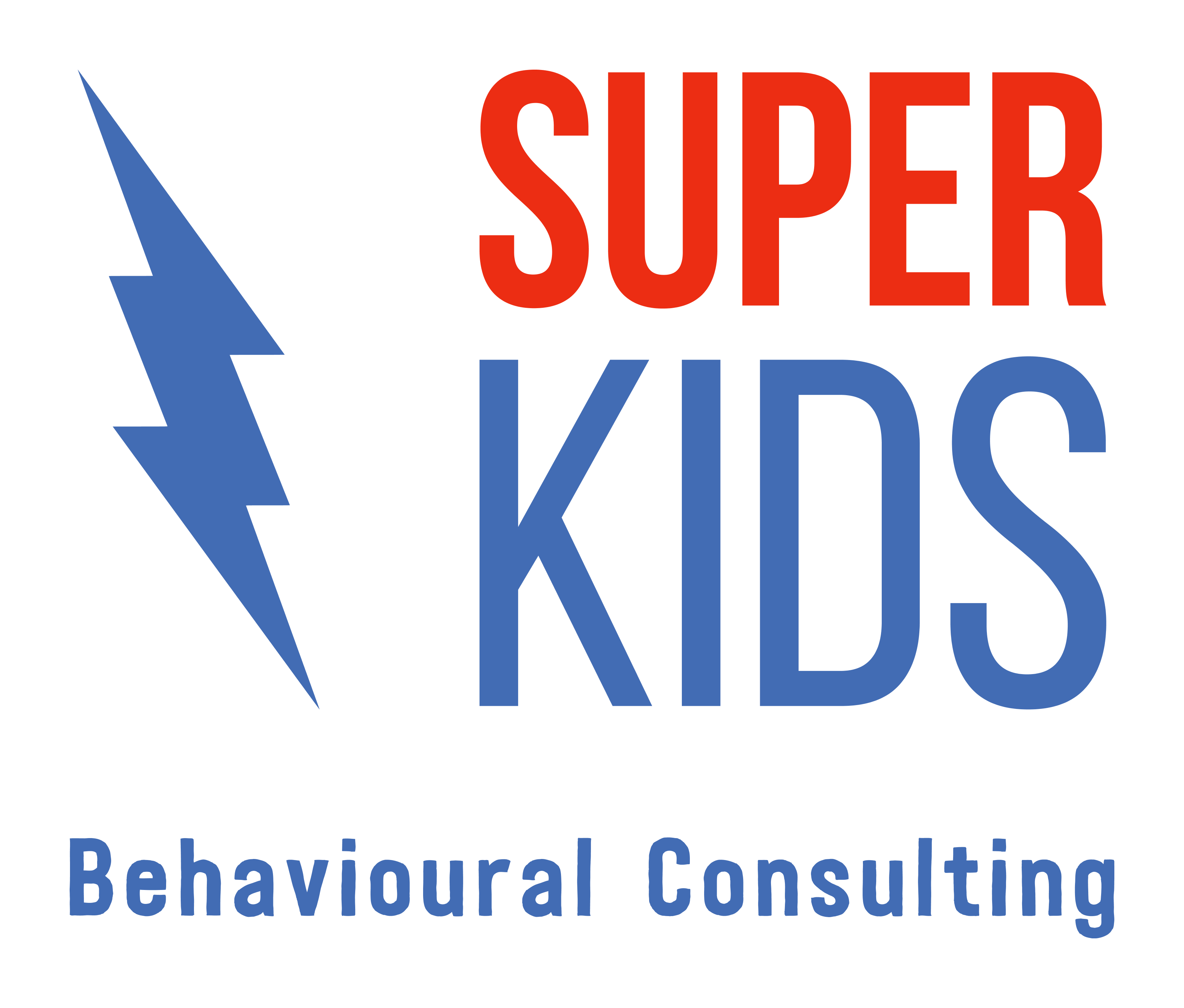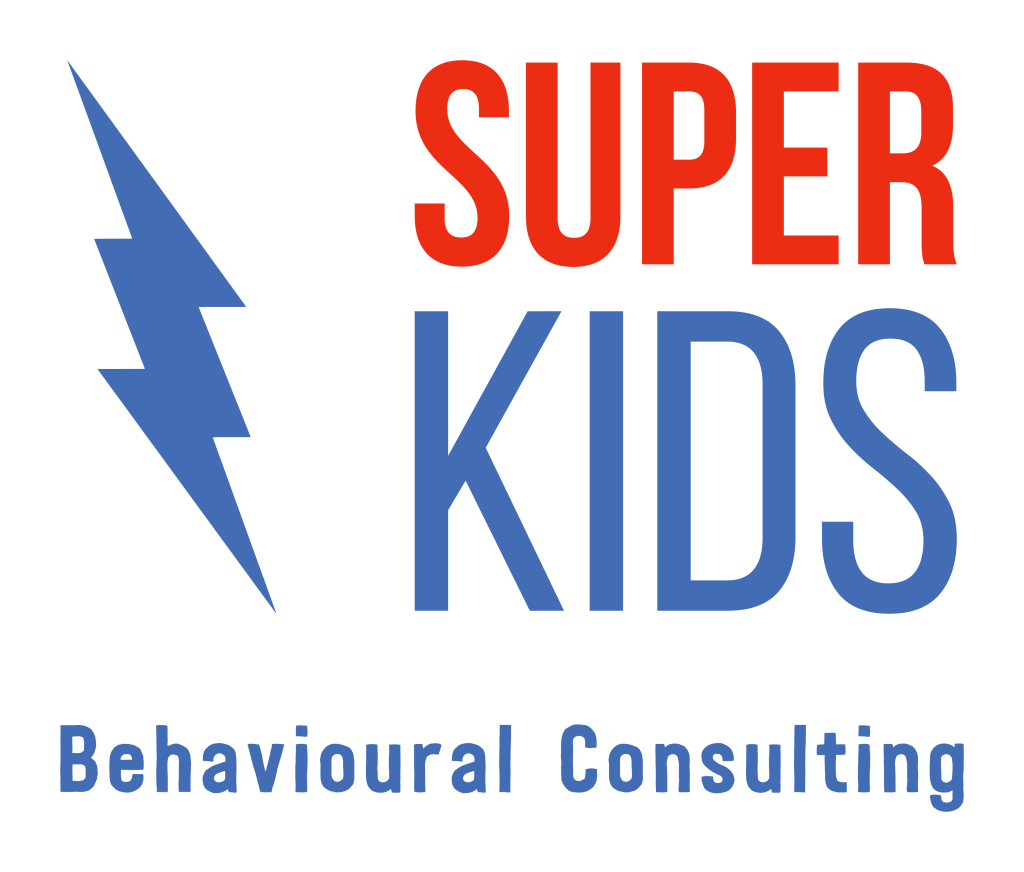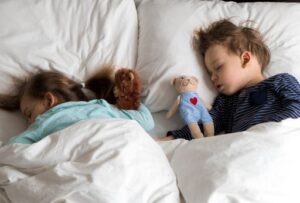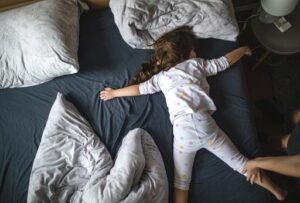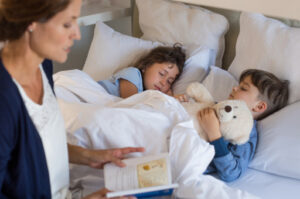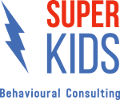Common sleep difficulties experienced by Autistic children

Anita Bennett-Stewart
Behavioural Sleep Specialist & Behaviour Consultant
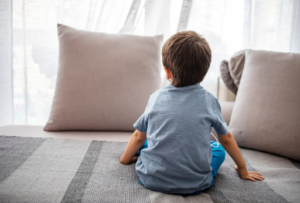
Autistic children are more likely to experience some common sleep difficulties than neurotypical children. Where up to 50% of neurotypical children experience poor sleep1, up to 80% of neurodivergent children including Autistic children experience sleep difficulties2. For children experiencing chronically poor sleep, these difficulties may not resolve on their own and the child may need specialised support to learn skills to sleep better.
Why is it essential for your Autistic child sleep well?
Although sleep difficulties are common, it is not healthy to experience chronic sleep difficulties. Research has shown that when we are consistently deprived of sleep, this can affect our
- Mood
- Attention
- Motivation
- Memory, information processing and problem solving 3
For neurodivergent children in particular, poor sleep is associated with higher rates of repetitive behaviour during behavioural intervention4 and higher reports of aggression, inattention and risky behaviour5.
And of course, if children are not sleeping well then often their parents are not sleeping well either! This is true especially for parents of neurodivergent children, who experience poorer sleep quality than parents of neurotypical children.6,7
‘Good’ sleep includes both a high sleep quality (how well you sleep) and age-appropriate sleep quantity (how much you sleep). If you’re not sure how much sleep your child needs, check out our recent blog here!
What are sleep difficulties?
Behavioural sleep difficulties are non-medical challenges a child experiences which impact their sleep. This may be when preparing for bedtime, upon going to bed or in the morning routine. Children may experience one or a combination of these behavioural sleep challenges.
It is important to note that children may also experience medical sleep difficulties. These may include but are not limited to disrupted breathing during sleep, sleep walking or talking or teeth grinding. If you are concerned that your child is experiencing these, reach out to a medical professional for further advice.
What behavioural sleep difficulties do Autistic children experience?
It can be helpful to think about behavioural sleep difficulties in 5 categories:
1. Routine Refusals
Routine Refusals are when a child is not able to participate in their bedtime routines because they become upset, distressed or engage in behaviours of concern. Of course, all children will sometimes not want to go to bed or not want to brush their teeth – this is normal! However, the nighttime routine usually should be a time to calmly wind-down before bed. If a child is becoming stressed or upset during the bedtime routine on an ongoing basis, behavioural supports may be needed. These supports may include helping the child communicate their wants more effectively, follow the routine more successfully or adjust the routine to be more enjoyable for them, or a combination of all! Long-term, the routine should be calming steps for your child to participate in before bed.
2. Sleep-Interfering Behaviours
These are all the things a child might do instead of sleep. For example, the child may call-out to their parents, hop out of bed to play, or engage in stereotypy or self-stimulatory behaviour before falling asleep. It is important to note that these behaviours are only a concern if they disrupt or delay the child falling asleep. Children may use a variety of behaviours to self-regulate and if these are supporting the child to fall asleep quickly then they should be able to continue these behaviours. However, if the child is taking a long time to fall asleep because they are engaging in other behaviours, they may need behavioural supports to learn to lay in bed quietly before sleep.
3. Delayed Sleep Onset
Parents should aim for their child to fall asleep within 15-20 minutes of being bid goodnight. Some children may experience significant sleep delays of up to several hours. Minor sleep delays are normal after major changes, such as when jet-lagged or upon moving house. If a child is often taking longer than about 20 minutes to fall asleep, they may need sleep support to learn to fall asleep quickly or to adjust their sleep schedule to a more suitable time.
4. Nighttime Waking
Nighttime awakenings are a common sleep concern for parents, as often this can be disruptive to the whole family’s sleep as well as the child themselves. It is normal for all of us to wake up several times overnight, however we often fall asleep so quickly we don’t even remember it! It is important that children are able to put themselves back asleep upon waking overnight, just as when they put themselves to sleep at the start of the night. To fall back asleep overnight, we usually need the same set-up as when we fell asleep at the start of the night. For example, if a nightlight was on or a parent present upon falling asleep, the child will often need these again to fall back asleep upon waking overnight. Without these environmental arrangements, it may be hard for the child to fall back asleep, leading to longer night wakings.
5. Early Awakening
Early awakenings are when a child wakes overnight but then is not able to go back to sleep before their regular wake-time. Early awakenings and night awakenings can both be influenced by the sleep environment and by the child’s sleep schedule. A child may wake early and be unable to fall back asleep due to not being tired enough again to fall back asleep. To support a child with early awakenings, it may be necessary to review and establish a new sleep environment and schedule.
These are just some of the behavioural sleep concerns Autistic children may experience. While there is no such thing as a perfect sleeper, if a child is experiencing chronic sleep difficulties then sleep support from a professional may be needed. Understanding what common sleep difficulties can look like for Autistic children is the first step in being able to support them to improve their sleep and, therefore, quality of life.
Resources:
- Jin, C. S., Hanley, G. P, & Beaulieu, L. (2013). An individualised and comprehensive approach to treating sleep problems in young children, Journal of Applied Behaviour Analysis, 46(1), 161-180.
- Richdale, A. L., & Schreck, K. A. (2009). Sleep problems in Autism Spectrum Disorders: Prevalence, nature & possible biopsychosocial aetiologies, Sleep Medicine Reviews, 13, 403-411.
- Van Dyk, T. R., Thompson, R. W., & Nelson, T. D. (2016). Daily bidirectional relationships between sleep and mental health symptoms in youth with emotional and behavioural problems. Journal and Pediatric Psychology, 41(9), 983-992.
- Abel, E. A., Schwichtenberg, A. J., Brodhead, M. T., & Christ, S. L. (2018). Sleep and challenging behaviours in the context of intensive behavioural intervention for children with Autism. Journal of Autism and Developmental Disorders, 48 (11), 3871-3884.
- Becker, S. P., Sidol, C. A., Van Dyk, T. R., Epstein, J. N., & Beebe, D. (2017). Intraindividual variability of sleep/wake patterns in relation to child and adolescent functioning: A systematic review, Sleep Medicine Reviews, 34, 94-121.
- Blampied, N. M., & France, K. G. (1993). A behavioural model of infant sleep disturbance. Journal of Applied Behaviour Analysis, 26(4), 477-492.
- Gallagher, S., Phillips, A. C., & Carroll, D. (2010). Parental stress is associated with poor sleep quality in parents caring for children with developmental disabilities. Journal of Pediatric Psychology, 35(7), 728-737.
Disclaimer: The advice in this article is general in nature. If your child experiences sleep difficulties, reach out to a trusted professional for further individualised advice and support.
Super Kids acknowledges each individual’s personal preference to use identity-first or person-first language to describe themselves or their loved one. We interchangeably use both language conventions and therefore refer to both Autistic children and children with Autism.
